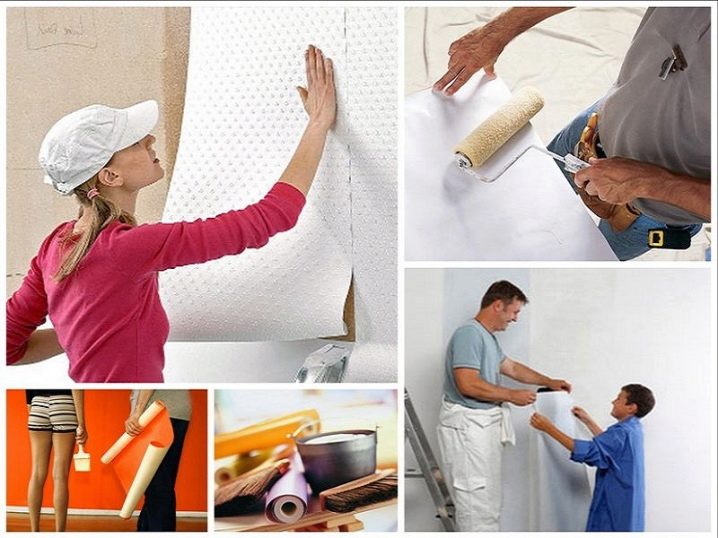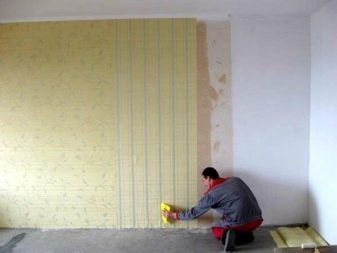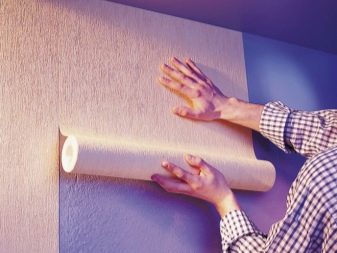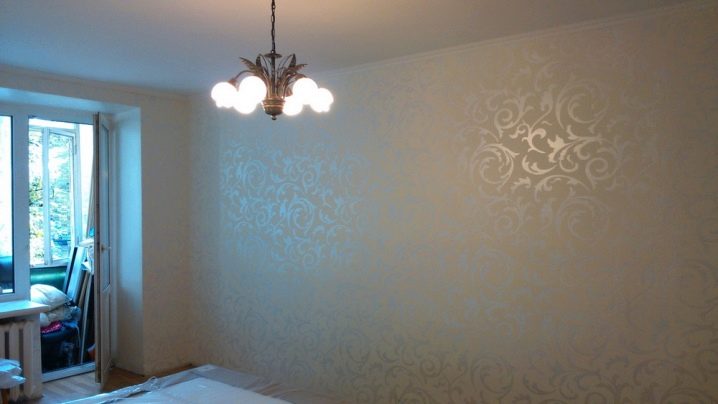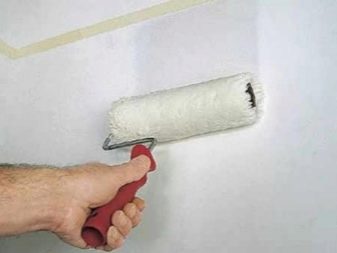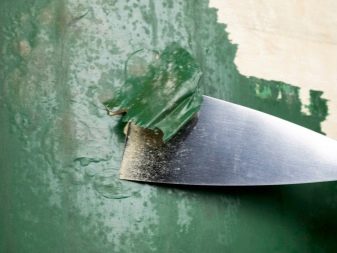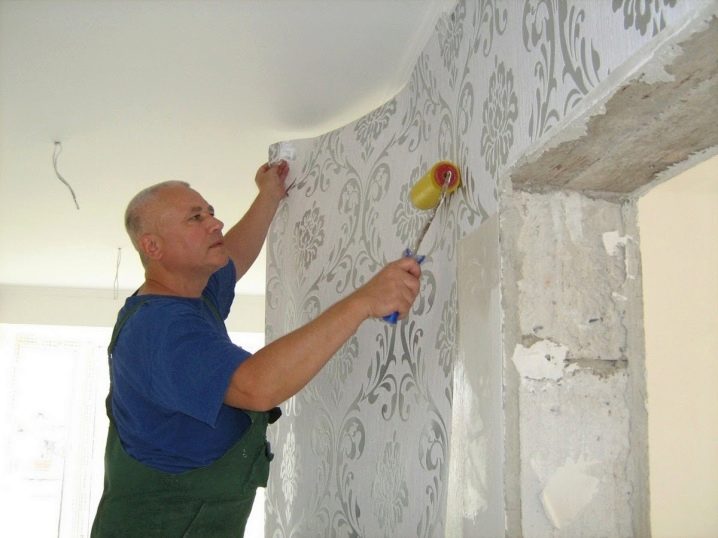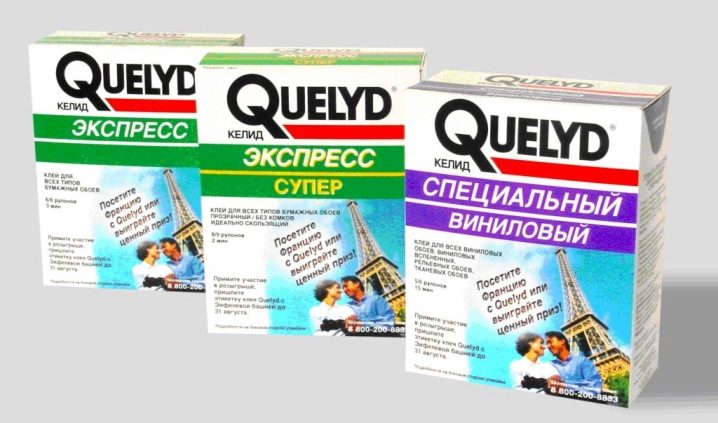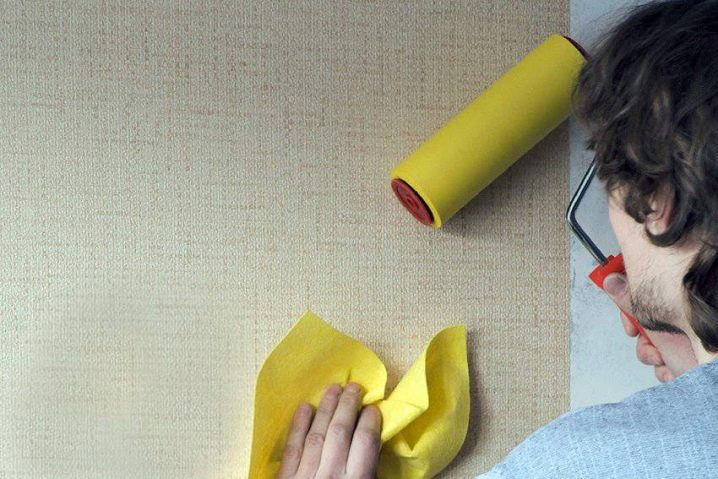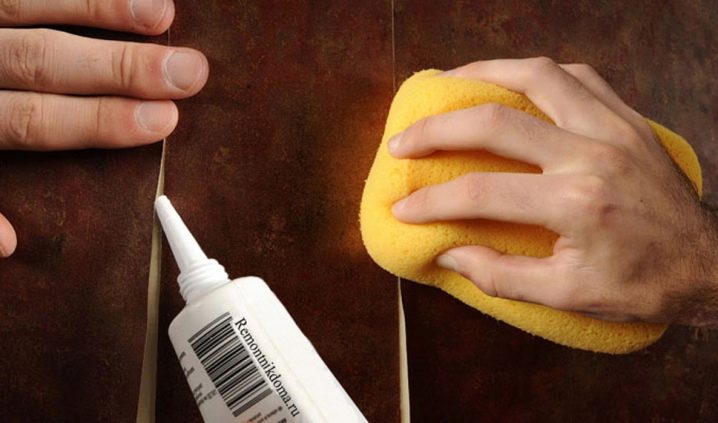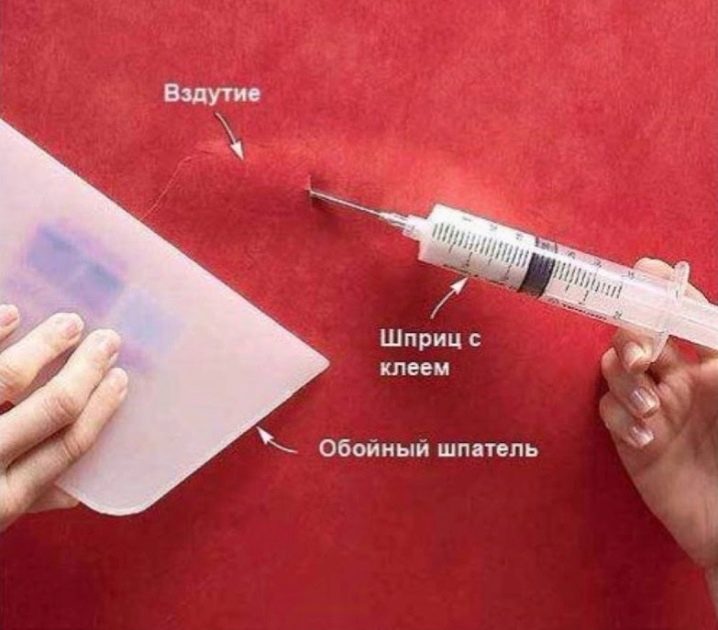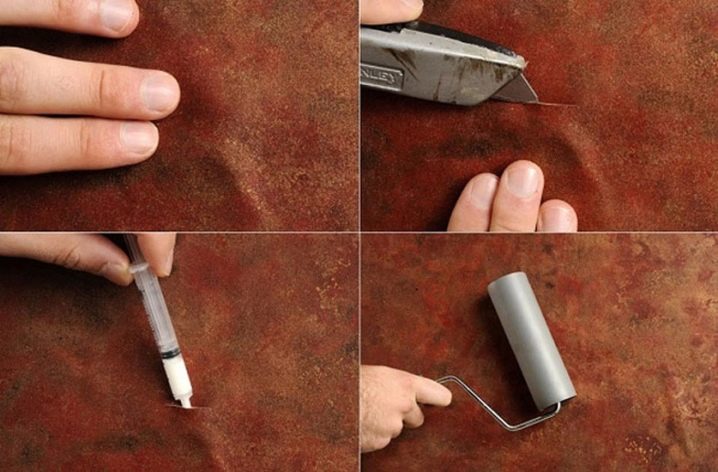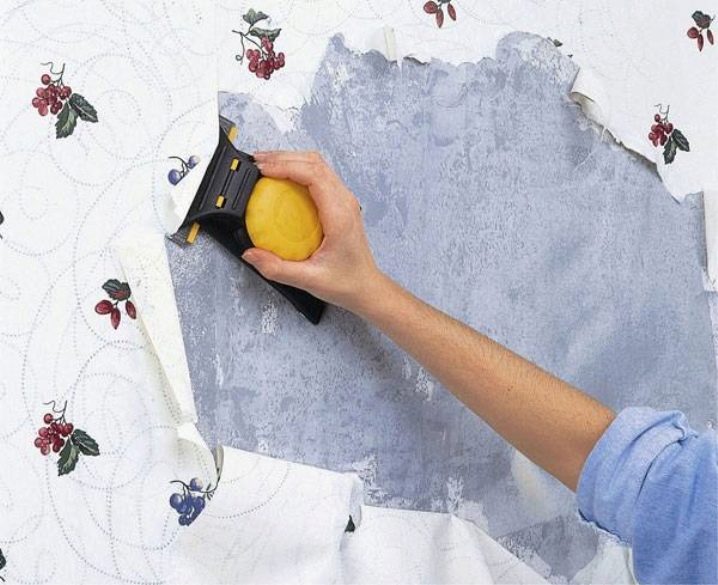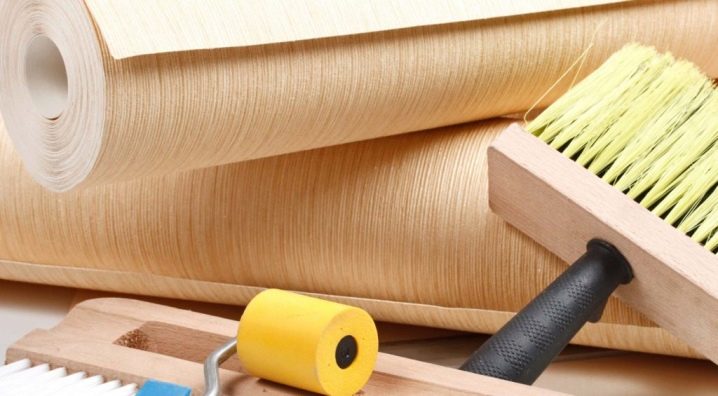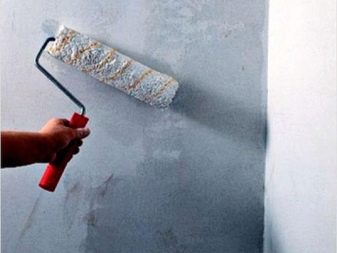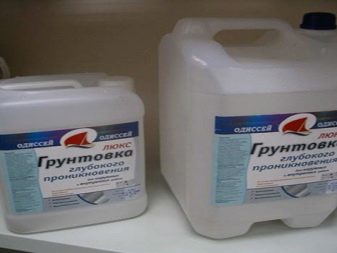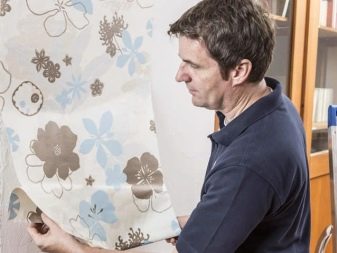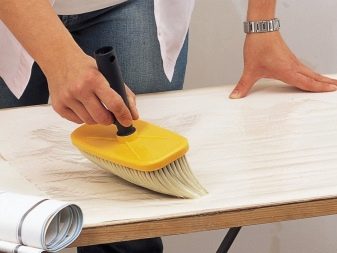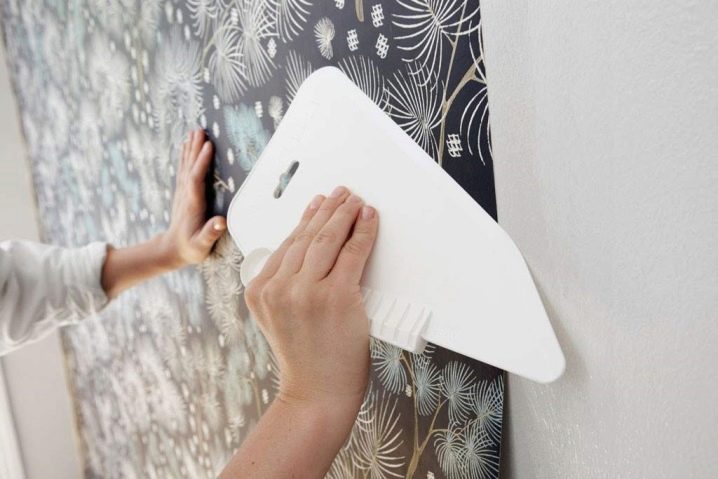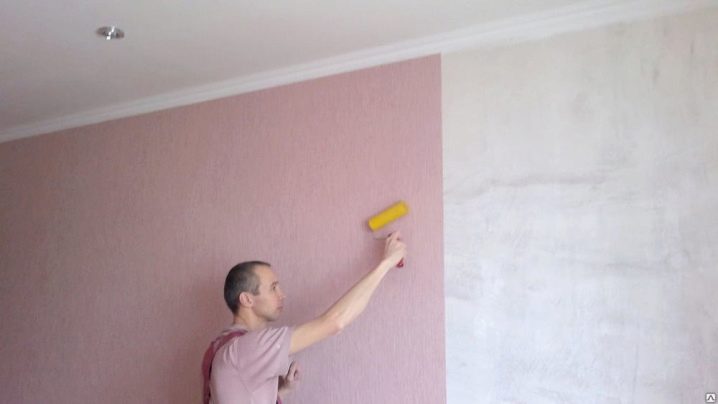How to remove the bubbles on the wallpaper after drying?
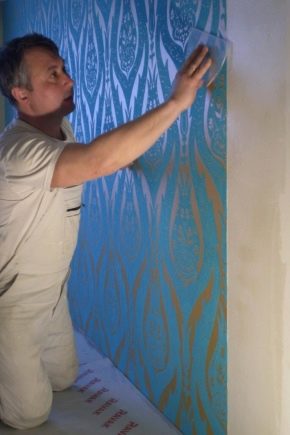
Wallpapers today are one of the most popular finishing materials. They are long canvases that can be glued to the wall or ceiling. From the outside, a special decorative layer is applied to them, giving them uniqueness and practicality.
The technology of applying wallpaper is quite simple, which allows you to use it, even without having some experience. But if the installation of the sheet is incorrect, it can lead to bloating.
Why bubble?
Wall-paper is a thin material that is obtained on the basis of paper or other natural substances.Therefore, this product is not able to smooth out almost all the irregularities of the wall. Sometimes after mounting bubbles appear on the surface of the wallpaper, which reduce the decorative characteristics of the wall. To exclude such phenomena, the whole process of pasting should be monitored. There are several main reasons for the swelling of the surface:
- Drafts. The cause of their occurrence may be cracks or cracks in the walls. This does not allow the glue to grab quickly and efficiently, which leads to bloating. Therefore, to exclude such phenomena, you should carefully check the condition of the walls. It is desirable to close up all the cracks.
- Improper preparation of the base. Today, many are applying wallpaper immediately to the walls, using only an adhesive substance. But these surfaces are not always perfectly smooth, which affects the quality of pasting. In order to minimize the risk of swelling, the sheets should be allowed to adhere to the base evenly and tightly. Therefore, it is advisable to align the walls with a putty or remove a layer of old paint before installation. If the surface is normal, then it must be primed before applying the adhesive.Such substances significantly improve the adhesion of products.
- Drawing on a wet wall. Wallpapering should be done only after the primer or putty on the wall is completely dry. Moisturize the surface only with glue, which is applied both on the wall and on the wallpaper itself.
- Uneven layer of the mixture below the surface. If the glue is poorly distributed, it will lead to the formation of mounds. After it dries, these flaws remain on the paper, which must then be further aligned. To prevent this, you should use high-quality adhesives, which are diluted quickly and are a uniformly thick mixture.
- Insufficient glue drying. Virtually all formulations used for the installation of wallpaper, contain water. Therefore, so that the material is fixed on the wall, it is necessary that the moisture is removed, and only binder compositions remain. Drying wallpaper should occur only in a warm room and without the presence of drafts. If this is not adhered to, it can lead not only to the appearance of bubbles, but also a complete peeling of the material.
Note that when pasting the wallpaper may be a little bitwhich leads to the appearance of small tubercles. But they should not be confused with bubbles, because they stretch after drying. The swelling remains and in some cases may even increase.
What to do?
Blistering wallpaper is not only ugly, but also not practical. Over time, these shortcomings can be causes of flaking material. This is due to the fact that inside the air enters with moisture, which begins to inflate the base of the substance.
Remove the bubbles on the wallpaper after drying in several main ways:
- Smoothing It should be understood that this can only be corrected immediately after sticking or after a short time. To eliminate the bubble, you should take a special roller and try to disperse the air to the side. Thus, it is distributed over a large area, where it is not so noticeable. If paper or vinyl wallpaper is blown up, then a soft cloth should be used to smooth it out. Please note that this should be done very carefully, since the strength of such surfaces is negligible. An alternative would be a plastic spatula, which can handle different types of wallpaper.
- Piercing. Remove swelling on dried wallpaper on the wall in this way is possible only if the bubbles are small. It is easy to pierce a small hole with a regular needle. When the hole appears, gently smooth the surface of the wallpaper. If there is a frozen glue under the swelling, then it is not possible to remove it, since the material forms a strong bond with the surface. The elimination of the adhesive solution is only relevant if the mixture has not yet fully dried.
- Cutting and syringe. This option is the most versatile. It is suitable for work even with old bubbles that appeared on surfaces. To eliminate bloating in a similar way, you need to stock up on liquid fresh glue, which is drawn into a syringe. To eliminate a bubble, it must be carefully cut in one of the planes. It is important to do this in such a way as not to disturb the structure of the main pattern.
After that you need to drive a needle under the paper and squeeze out a little glue. When the paper softens, then you can try to smooth the material with a rag, spatula or roller. In most cases, the glue comes out through the cracks, then you need to wipe it from the wallpaper, not letting it dry.
Wallpaper on non-woven base practically does not swell, as they are highly durable. This is due to the fact that they contain cellulose and several polymer components. But if they are swollen, it means that the surface of the wall is not properly aligned. To correct such a flaw on non-woven wallpaper can only dismantle the material, followed by leveling the surface and completely replacing the finish.
How to stick?
Avoiding the appearance of bubbles is much easier than eliminating them. Therefore, you need to monitor this phenomenon throughout the installation of the wallpaper. To stick them high quality, you must follow a certain sequence of actions:
- Preparing the walls. Before you start pasting, you need to remove the old coating from the surface of the walls. If the plaster does not hold or the wall is uneven, then you need to additionally strengthen and level it. For this purpose, special plasters and cement mortars are used.
- The choice of materials. Glue is selected on the basis of the technical parameters of the selected wallpaper. Experts prefer only high-quality foreign adhesives,which dissolve quickly and firmly hold the coating on the wall.
- Padding. Before applying the adhesive, the walls should be coated with a primer. It not only increases adhesion, but also prevents the occurrence of fungi and other similar phenomena.
- Pasting Initially, glue is applied on the surface of the wall or on the inside of the wallpaper. Please note that only the manufacturer indicates where and how much to apply products. It is important to evenly distribute the mixture, which should not contain lumps. When the glue is applied, you can begin to fix the canvas. The piece is applied strictly vertically relative to a plane. Try as quickly as possible to place it on the right place. Paper wallpaper is quickly defrosted, which does not always allow them to move to align. But better materials are perfectly amenable to correction, which greatly simplifies the work with them.
- Alignment To get a smooth surface without bubbles, you should smoothly smooth the wallpaper. When the sheet is aligned, you can proceed to remove the glue and air. Start it on top of the canvas and move down, smoothing the surface with a spatula.Note that it is advisable to start from the center and move the tool to the side. Thus, the wallpaper is not only aligned, but the extra glue is “chased out”. If necessary, remove the excess solution and align the fabric along the pasting.
All other strips are glued in the same way. It is important not to fix the ends of the sheet, and then move to its middle. You need to do everything the other way around, which will eliminate the appearance of airbags and bubbles, respectively. If, nevertheless, blisters appeared, then you need to peel off the paper a little and expel the air, then firmly gluing the material to the wall. When the canvas does not fit smoothly with other surfaces, then it is better to cut it with a sharp clerical knife. This is best done when the material is completely dry or immediately after gluing, before the paper is too soft.
Removing air from under the wallpaper is a simple operation that requires only desire and a little time. It is important to observe accuracy here in order to obtain a high-quality surface with minimal damage.
How to remove the bubbles on the wallpaper, see the next video.
